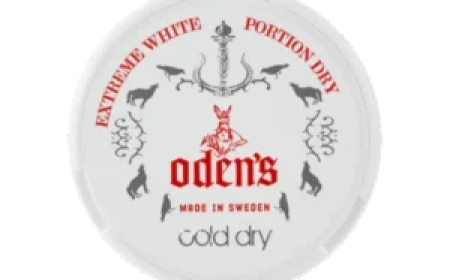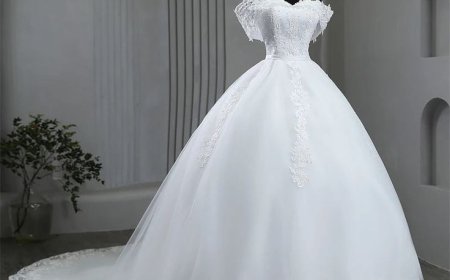More Than Style: Denim Tears as a Social Voice
Denim Tears Canada Collection at Official Denim Tears Clothing Website. Enjoy Fast Shipping and Substantial Discounts! Up to 50% Off.

In the ever-evolving world of fashion, few brands transcend the boundary between style and substance. Denim Tears, founded by Tremaine Emory in 2019, is not just a clothing brandits denim tears a cultural movement. At a glance, its garments may appear like typical streetwear, but beneath the surface lies a deep, compelling narrative rooted in Black history, social commentary, and resistance. Denim Tears uses fashion not only to clothe the body but also to voice truths that have long been marginalized, overlooked, or forgotten. This is fashion as protest, fashion as education, fashion as remembrance.
The Origins of Denim Tears
Tremaine Emory, a creative director, designer, and cultural commentator, founded Denim Tears with a clear purpose in mind. Having worked closely with brands like Yeezy, Off-White, and Supreme, Emory already had an impressive footprint in the fashion world. But Denim Tears was his most personal projectan avenue for expressing his deep concern with the social injustices that have long plagued the African American community.
The very name Denim Tears evokes a duality: denim, a fabric worn by the working class and closely tied to American history, and tears, the emotion rooted in pain, loss, and resilience. Emorys work combines these elements into garments that confront the legacies of slavery, racism, and economic inequality.
The launch collection of Denim Tears focused on the legacy of cotton. Emory released a line of jeans and sweatshirts adorned with a cotton wreath motif, echoing the brutal history of cotton plantations in the American South. These were not just design choices but direct references to the Black experience in America. By choosing to highlight cottona fabric steeped in the exploitation of Black laborEmory set the tone for a brand that was committed to truth-telling.
Clothing as a Canvas for History
Denim Tears garments are conversation starters. Every piece is embedded with meaning, intended to provoke thought, awareness, and dialogue. In a world where fashion often leans into aesthetic over meaning, Emory flips the script. He treats clothing as a canvas, drawing on elements of Black history, literature, and music to inform his collections.
What makes Denim Tears so compelling is that it doesn't seek to commodify Black pain. Rather, it tries to elevate and honor Black voices, struggles, and achievements. The cotton wreath, for example, isnt just a historical symbolits an emblem of survival and legacy. It forces the wearer and the viewer to remember the past, confront the present, and reimagine the future.
Emory has frequently referenced artists, thinkers, and civil rights leaders in his work, and has made it clear that his designs are rooted in a desire to educate and challenge. In this way, Denim Tears transcends fashion; it becomes pedagogy. It turns everyday wear into a vehicle for historical engagement.
The Politics of Representation
Denim Tears emerged at a critical juncture in American culture. The resurgence of the Black Lives Matter movement, the increasing visibility of police brutality, and the broader conversation around systemic racism provided a backdrop against which the brands mission became even more urgent. Emory's voice, amplified through Denim Tears, joined a growing chorus of Black creatives reclaiming their narratives and demanding space in traditionally exclusionary industries.
Representation in fashion has often been superficial. Diversity campaigns without structural changes, tokenism disguised as inclusion, and performative allyship have characterized much of the industrys response to calls for change. Emory rejects this approach. Instead of waiting for institutional approval, he created his own platformone rooted in authenticity and truth.
His collaborations further reflect this commitment. Denim Tears has worked with Levis, Converse, and Dior, yet never watered down its message. These partnerships werent about mainstream acceptance but about challenging the mainstream to confront uncomfortable truths. Through these collaborations, Emory brought the stories of the African diaspora to larger audiences while maintaining creative and cultural control.
Art, Activism, and Identity
The power of Denim Tears lies in its seamless fusion of art and activism. Tremaine Emory doesnt see fashion as separate from politics, and Denim Tears reflects that belief. The brands storytelling incorporates archival images, historical texts, and oral traditions, creating a rich tapestry of identity and resistance.
One of the most striking examples is Denim Tears approach to editorial photography. Models are often depicted in serene, almost sacred poses, wearing clothes that reference pain but also dignity. Theres a sense of reverence in the way Black bodies are portrayednot as commodities, but as carriers of culture, history, and memory.
This artistic direction is no accident. Emory believes that the aesthetics of Black life deserve to be celebrated in their fullness. Joy, pain, survival, and love are all part of the story. In showcasing this complexity, Denim Tears defies the tendency to flatten Black experiences into monolithic stereotypes.
Denim Tears and the Future of Conscious Fashion
In a fashion landscape increasingly dominated by fast fashion and fleeting trends, Denim Tears stands apart. Its longevity doesnt depend on hype cycles or celebrity endorsements (though it has had plenty). Instead, it thrives on its depth, its honesty, and its mission.
Emorys approach also signals a broader shift in consumer consciousness. Todays audiences, especially younger generations, are more likely to support brands that align with their values. They want more than just stylethey want substance. Denim Tears offers both, challenging its audience to think critically about what they wear and why.
The brands success also serves as a blueprint Denim Tears T Shirt for other creatives seeking to infuse their work with meaning. It proves that fashion can be a legitimate site of activism, that clothes can educate, and that style and substance are not mutually exclusive. Denim Tears is not only pushing boundariesits reshaping them entirely.
Conclusion: A Brand With Soul
More than just a fashion label, Denim Tears is a movement. It is a call to remember, to reflect, and to resist. Tremaine Emory has built a brand that speaks truth to power through denim, cotton, and culture. By using fashion as a tool for social commentary, he invites the world to engage in a deeper dialogue about history, identity, and justice.
In a world saturated with brands vying for attention, Denim Tears stands out not because it shouts the loudest, but because it speaks with the most sincerity. It doesnt just ask, What do you want to wear? It asks, What do you want to stand for?
Thats the legacy of Denim Tears. Its not just worn on the bodyit lives in the mind and spirit of those who dare to wear the truth.


































